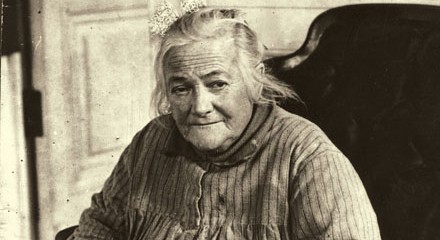As International Women’s Day approaches (8 March) some mainstream media will run their usual articles about the day and its history. Some may point out that the original name was International Working Women’s Day and that it was decided upon at a 1910 socialist congress in Copenhagen. It may be mentioned that one of the proponents of the holiday was Clara Zetkin, a little-remembered German socialist today who was, at the time, a household name.
Among some of the famous revolutionary women of that time, Zetkin stands out. Her friend Rosa Luxemburg was an early critic both of Lenin’s ideas about the revolutionary party and later of the October 1917 Bolshevik seizure of power. But Luxemburg was murdered too early to know how she would have reacted to the increasingly dictatorial Soviet regime in Russia. The American anarchist Emma Goldman, on the other hand, actually visited Soviet Russia and returned deeply disenchanted.
Unlike those two, Clara Zetkin became an enthusiastic Communist, remaining loyal to the Stalinist regime right up until her death in 1933. She was, among other things, a member of the Executive Committee of the Communist International during many of those years. She was complicit in the crimes of the Stalinist regime in that period, including serving as one of the prosecutors in a trial of a rival socialist organisation in 1922.
While she disagreed with the Soviet leadership on minor issues from time to time, on the whole she could not have been more loyal (which explains her survival during a period when so many socialists were falling victim to the Stalinist regime).
One example of this loyalty happened in August 1924. Lenin had died earlier in the year and Stalin was tightening his grip on the Communist Party. In Georgia, which the Red Army had invaded in 1921, a long-awaited armed uprising broke out against Soviet rule. Though the rebellion only lasted for a short time, it was followed by a bloodbath. The local secret police (the Cheka) massacred several thousand Georgians, including political prisoners who had nothing to do with the rebellion, as well as family members. The local Social Democrats and their allies were killed, deported or jailed. A young Chekist named Lavrenti Beria made his name with his ruthlessness towards the opposition.
Things got so out of control that the leadership of the Soviet Communist Party called in Stalin’s crony, Sergo Ordzhonikidze, who was in charge of the whole South Caucasian region, to explain himself. “Perhaps we did go a little far,” he admitted, “but we couldn’t help ourselves.”
That admission came behind closed doors. Publicly, the Communist Party never owned up to what it had done in Georgia in the late summer of 1924. And to support its assertion that it had done no wrong, and that there was nothing to be ashamed of, the Comintern sent the esteemed veteran socialist Clara Zetkin to Georgia to write up a report.
Her report was published in 1926 in a book called Imbefreiten Kaukasus — In the Liberated Caucasus. Among other things, she asserted that “only” about 300 Georgians died during the rebellion. Researchers today give a much higher number, some arguing that over 12,500 were shot by the Soviets.
Zetkin’s line was that the rebellion was insignificant. But Stalin had a different view. In a speech not long after the rebellion was crushed, he declared it had been a threat to the Soviet regime on the scale of the Kronstadt or Tambov rebellions. But that too was said behind closed doors. The official regime line was that the 1924 rebellion was a minor episode of kulaks, aristocrats and bandits, backed by western imperialism. That line did not change until the Soviet regime was toppled nearly seven decades later.
Clara Zetkin was a tragic figure, like so many who started their lives as morally decent revolutionaries but who wound up as servants of a blood-soaked dictatorship. This is not how she is remembered today by those who do know her name, like the Die Linke party in Germany. But it is a part of her legacy — a significant part — that should not be forgotten.
This column appears in this week’s issue of Solidarity.
